Starting your fitness journey can be intimidating, but it doesn’t have to be complicated. The key is to start with the right mindset, focus on the fundamentals, and to build long-lasting habits. Fitness isn’t a quick fix; it’s a long-term commitment to yourself that takes time but comes with great rewards when done properly. Setting S.M.A.R.T. goals (Specific, Measurable, Attainable, Realistic, and Timely) can help you stay focused and motivated throughout your journey.
 Individuals can get held up by the numbers on the scale, and for good reasons, but it's also important to consider the changes in mood, energy, and strength along the way. These changes are often overlooked, yet they are often the first signs of progress and can be just as important as the numbers on the scale.
Individuals can get held up by the numbers on the scale, and for good reasons, but it's also important to consider the changes in mood, energy, and strength along the way. These changes are often overlooked, yet they are often the first signs of progress and can be just as important as the numbers on the scale.
When it comes to exercise, keep things simple. Having a balanced routine of strength training to develop muscle and support bone and joint health, include cardio to improve heart health and endurance, and flexibility and mobility work to keep the body moving and reduce risk of injury. Fancy equipment or advanced techniques aren’t necessary in the beginning; start with the fundamentals and build from there. For example, begin with a bodyweight squat, and once you feel comfortable with form and technique, add resistance with a kettlebell or a dumbbell. Once you understand the basics, there are plenty of progressions to keep progress moving upward.
Burnout, overtraining, and injuries are important things to avoid when starting out. These issues are common among beginners, but even experienced athletes can fall into the same trap. The good news is that they’re preventable. When you begin a new routine, it’s always better to start slow and build gradually. Your body needs time to adapt to the new stressors that exercise places on it, and pushing too hard too soon increases the risk of overtraining and injury. A smart starting point could be 20-30 minutes per session, 2-3 days/week. Focus on proper form; it might feel repetitive at first, but mastering technique pays off. Good form not only makes your workouts safer, it also makes them more effective because you’re able to control your body and any external resistance with confidence.
Nutrition and exercise are important, having a solid foundation of both is important to reach the goals you have in place for yourself. Stick to balanced meals that include lean protein, complex carbs, healthy fats, and plenty of fruits and vegetables. Stay hydrated with water being your go-to drink. Avoid extreme diets, for example, having a regular daily calorie intake of 2,500 and cutting it down to under 1,500 overnight is often hard to maintain, unhealthy, and should be progressive if needed. For workout recovery, prioritize protein and carbs to replenish energy and support muscle repair.
You don’t need a gym membership to start. Although it can help with consistency, it’s not necessary when starting. Try simple bodyweight exercises like squats, push-ups, and planks. Add some low-impact cardio such as walking, cycling, or swimming. If you have access to dumbbells or resistance bands, basic strength movements like rows, lunges, chest press, and overhead press are all great options.
Consistency will be the secret to your success. Try to create a routine where workouts are around the same time and same day. Over time, these habits will turn into second nature. Also remember that fitness isn’t just about how you look; it's about feeling the improvement in your mood, energy, and sleep on a day-to-day basis.
As you begin your fitness journey, watch out for common mistakes. Be careful with overtraining, which can lead to burnout and injury, and avoid comparing your progress to others, it can be discouraging. Everyone is built differently, which makes everyone’s journey different and unique. Rest and recovery are just as vital to the workout itself because your body will need time to adapt to grow stronger.
Your Fitness journey is about progress, not perfection. Keep things simple, stay patient, and celebrate every small win along the way. The habits you build now will set the foundation for a healthier, stronger future.


 During long breaks like Thanksgiving, we adopt a different rhythm. We sleep in, move a little less, stop by the refrigerator a little more, and enjoy our unplanned days. That is normal and healthy. When the time comes to return to work and restart healthy routines, the change can feel rough. It is not about willpower—it is about habits. Once we have stepped away, our routines need time to rebuild.
During long breaks like Thanksgiving, we adopt a different rhythm. We sleep in, move a little less, stop by the refrigerator a little more, and enjoy our unplanned days. That is normal and healthy. When the time comes to return to work and restart healthy routines, the change can feel rough. It is not about willpower—it is about habits. Once we have stepped away, our routines need time to rebuild. As you approach your later years in life, exercise and movement can help combat some of the unpleasant effects of aging. There are many ways that you can exercise your body, but as you get older, how do you know what kind of exercise is the best and safest? The short answer is it depends. There is not just one kind of exercise that is the best. In general, incorporating aerobic exercise, strength training, flexibility, and balance work into your exercise routine will give you the most well-rounded benefits. Having the knowledge of the benefits of each type of exercise can help you determine what to prioritize based on your own individual needs.
As you approach your later years in life, exercise and movement can help combat some of the unpleasant effects of aging. There are many ways that you can exercise your body, but as you get older, how do you know what kind of exercise is the best and safest? The short answer is it depends. There is not just one kind of exercise that is the best. In general, incorporating aerobic exercise, strength training, flexibility, and balance work into your exercise routine will give you the most well-rounded benefits. Having the knowledge of the benefits of each type of exercise can help you determine what to prioritize based on your own individual needs.
 We work on a lot of build/design projects in retirement communities where the project is either new construction for a new community, or the plan is part of a repositioning that includes enhanced wellness spaces and services. If you follow industry trends, you see it all the time in press releases, RSS feeds and other media avenues: ground breakings for projects that include a state-of-the-art wellness wing, indoor/outdoor pool complex, etc. Communities are serious about folding resident wellness into their broader business strategy to remain viable in the market. Over my years at NIFS, I’ve had the pleasure of working on dozens of fitness center builds. As you can imagine, I’ve learned quite a bit along the way. Below are our top five recommendations (in random order) on pitfalls to avoid during your design journey.
We work on a lot of build/design projects in retirement communities where the project is either new construction for a new community, or the plan is part of a repositioning that includes enhanced wellness spaces and services. If you follow industry trends, you see it all the time in press releases, RSS feeds and other media avenues: ground breakings for projects that include a state-of-the-art wellness wing, indoor/outdoor pool complex, etc. Communities are serious about folding resident wellness into their broader business strategy to remain viable in the market. Over my years at NIFS, I’ve had the pleasure of working on dozens of fitness center builds. As you can imagine, I’ve learned quite a bit along the way. Below are our top five recommendations (in random order) on pitfalls to avoid during your design journey.
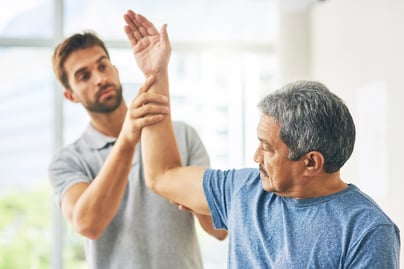 Arthritis is an increasingly common condition that refers to 100 different types of diseases, affects all age groups and affects 1 in 4 adults, equating to 80 million people in the United States. The most common form seen is osteoarthritis or degenerative joint d
Arthritis is an increasingly common condition that refers to 100 different types of diseases, affects all age groups and affects 1 in 4 adults, equating to 80 million people in the United States. The most common form seen is osteoarthritis or degenerative joint d
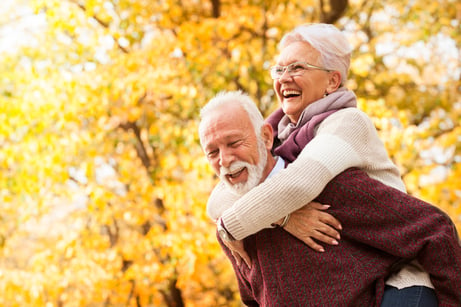 When we think of aging, some think about wrinkles, aches, and pains and the negative associations of the aging process. Yet there is so much more to aging! No, we cannot stop the aging process, but we can choose to live a healthy lifestyle. This is the time to do things you have never done and find enjoyment. Here are just a few things to consider when aging gracefully and living your best life!
When we think of aging, some think about wrinkles, aches, and pains and the negative associations of the aging process. Yet there is so much more to aging! No, we cannot stop the aging process, but we can choose to live a healthy lifestyle. This is the time to do things you have never done and find enjoyment. Here are just a few things to consider when aging gracefully and living your best life!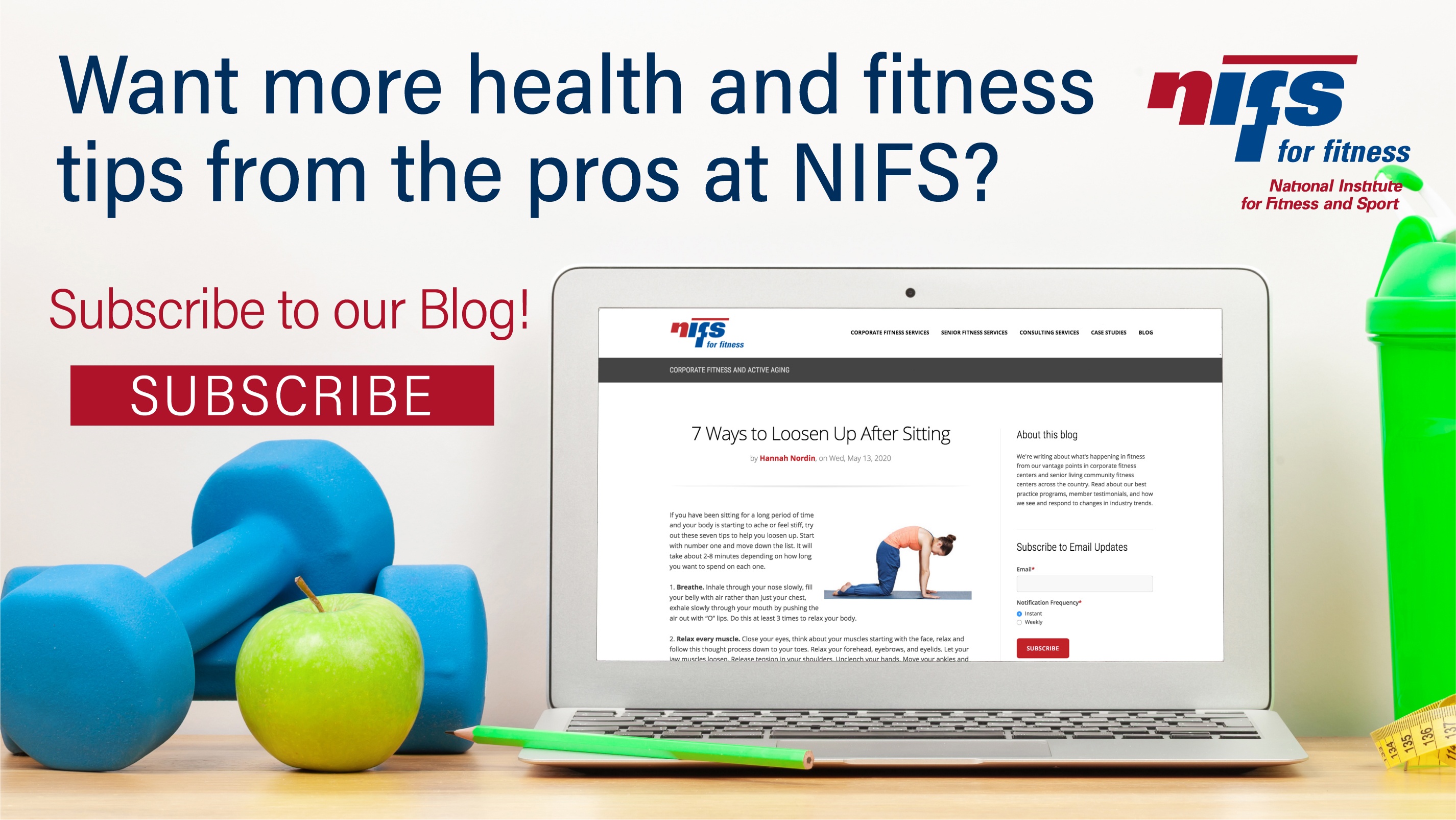
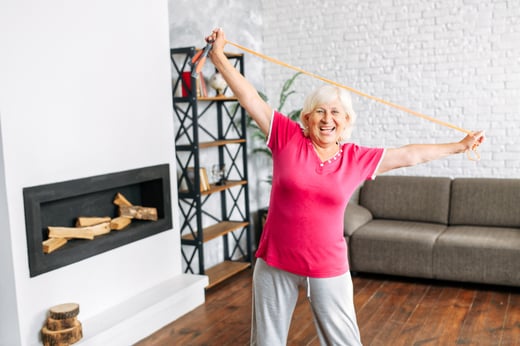 Actress Helen Hayes lived by these words, and lived a full and happy life well into her 90’s. So what do we mean by this motto….if you rest, you rust? Simply put, our bodies are made to move and if we become sedentary, our bodies get “rusty” as in our joints become stiff, our bones can become brittle and we lose muscle mass.
Actress Helen Hayes lived by these words, and lived a full and happy life well into her 90’s. So what do we mean by this motto….if you rest, you rust? Simply put, our bodies are made to move and if we become sedentary, our bodies get “rusty” as in our joints become stiff, our bones can become brittle and we lose muscle mass.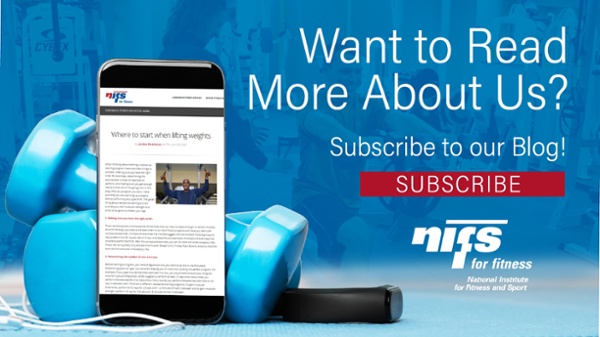
.jpg?width=404&name=GettyImages-1135376317%20(1).jpg) While practicing social distancing remains a priority for everyone, finding ways to stay physically active should also remain a priority. This is particularly true for older adults who may find themselves feeling increasingly isolated and vulnerable to remain safe. Exercise has long proven to provide numerous health benefits both for your physical well-being as well as your emotional well-being including:
While practicing social distancing remains a priority for everyone, finding ways to stay physically active should also remain a priority. This is particularly true for older adults who may find themselves feeling increasingly isolated and vulnerable to remain safe. Exercise has long proven to provide numerous health benefits both for your physical well-being as well as your emotional well-being including:
.jpg?width=480&name=GettyImages-905323392%20(1).jpg) Let’s face it, daily life can be very busy and sometimes overwhelming to many of us. Trying to fit in exercise every day can seem like a chore and many times gets put at the bottom of the “to-do” list even though we all know it should be near the top. Just because you can’t fit in a trip to the gym or attend your favorite exercise class doesn’t mean that you can’t get exercise or at least some movement time throughout your day. Your body can even benefit from little bits of movement at a time if that is all you have time for, so there really should not be any excuses not to get some movement or exercise in your day.
Let’s face it, daily life can be very busy and sometimes overwhelming to many of us. Trying to fit in exercise every day can seem like a chore and many times gets put at the bottom of the “to-do” list even though we all know it should be near the top. Just because you can’t fit in a trip to the gym or attend your favorite exercise class doesn’t mean that you can’t get exercise or at least some movement time throughout your day. Your body can even benefit from little bits of movement at a time if that is all you have time for, so there really should not be any excuses not to get some movement or exercise in your day.
%20and%20dog%20GettyImages-890287958%20(1).jpg?width=300&name=Senior%20(male)%20and%20dog%20GettyImages-890287958%20(1).jpg)